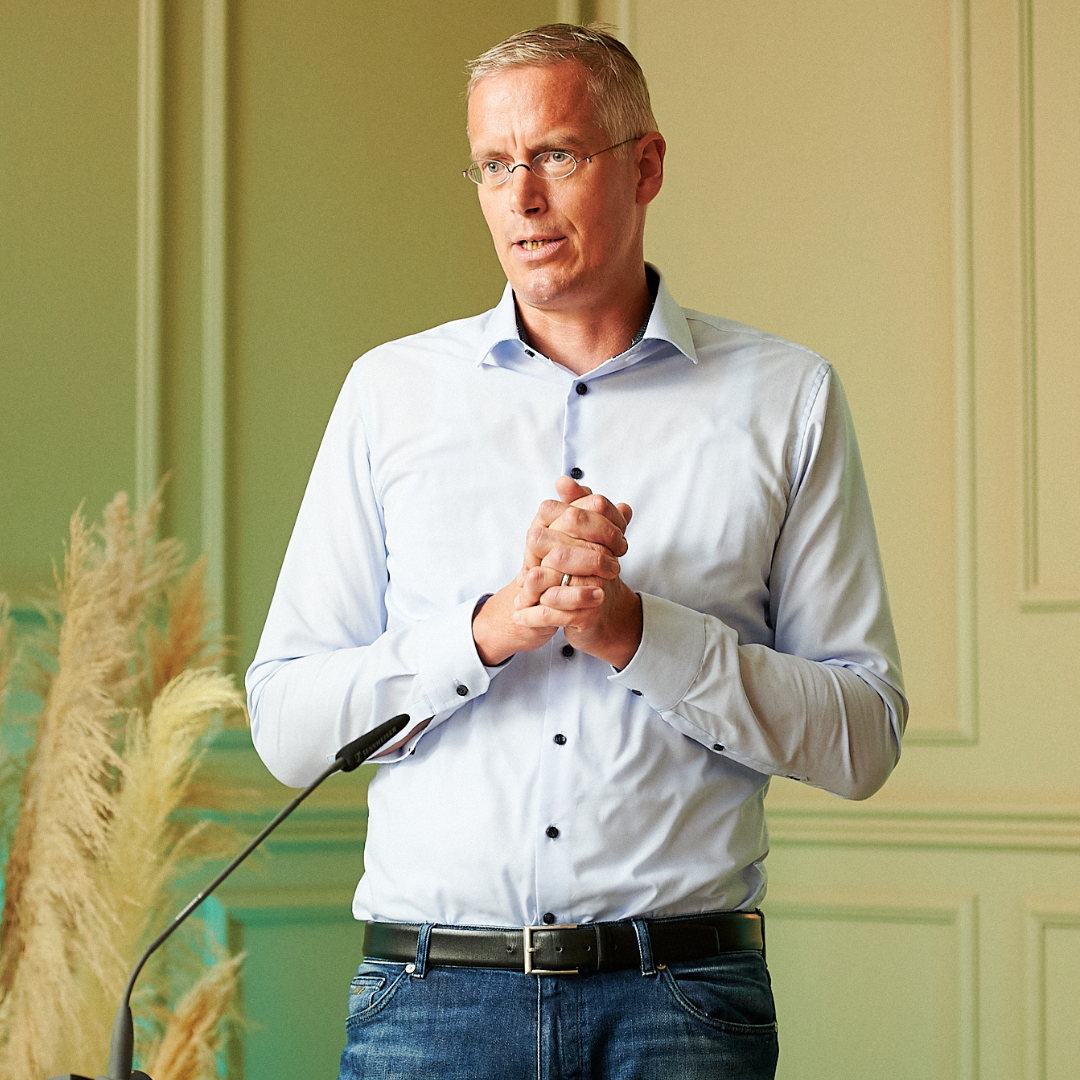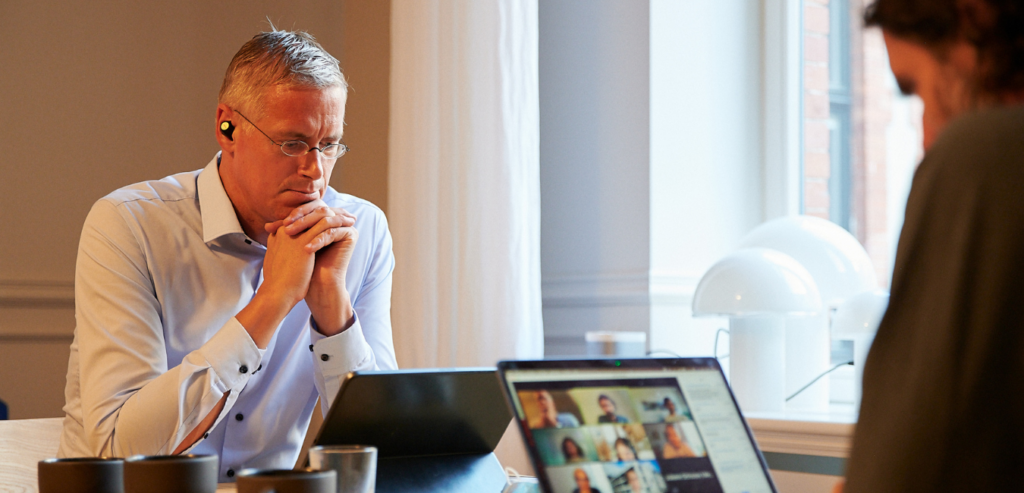
Soenke Zehle
Sensemaker and storyteller. Lover of abstraction, language and poetry. Zebras Unite chapter co-lead Saar region, Germany.
A Zebra is…
… an ethos. A lot of people around me have been asking themselves ‘Why isn’t change happening even though so many of us want to see it happen?’ There’s no dearth of people who want to do things but apparently, we’ve been missing a story that brings us together. When Zebras Unite came into being what struck me was that it arrived along with a powerful story we could relate to.
A need for creative transformation
I’m a little spoiled because I work at an art academy, and the question of how the new comes into the world is our daily bread and butter. And that’s a very privileged situation to be in.
Because it means organizing new perspectives on what is and could be with future generations is our job. And what we see is a tremendous need for creative transformation – of how we relate, work, and play, of the kinds of economies we need to build to sustain us along with the planet we live on.
co-creating The New
For me, the New is an empty space we need to envision what we want to create. Imagine you step into a room crowded with furniture: It makes it really hard to see the potential and all that you could do with that room. What I see is much greater involvement in how we co-create the spaces across which we organize our shared lives – cities, schools, workplaces – as well as the forms of information sharing and mobility to make it all come and stay alive.
letting go of our cherished stories
I don’t think of capital as an outside resource. It has to be an integral element of this transformation process. I’ve seen people in various sustainable finance communities move from impact investment toward transformation capital. And that’s my wish for the capital landscape: Before we talk about the money part, let’s talk about the transformation part. Because money is really just a tool to get us where we want to go. In order to utilize it as such, we first have to figure out where we’re going! What kind of transformation do we envision and how can this resource help us drive that process?
Only then can we have an informed conversation about whether or not we can get there, where the capital resources come from, how we’re measuring progress and who is in charge of steering this transformation.
It’s almost like turning the resource view on its head: Instead of assessing how much we have to see how far we can go with it, we start by defining where we want to go, and then figure out what resources we really need to get there. And by that I don’t just mean the amount of capital but also the quality and type of capital available to us.
To paraphrase the Italian economist Mariana Mazzucato: Maybe we have to let go of our most cherished stories about the level playing field. We need to tilt the playing field into the direction that we want to go. That’s a very difficult conversation to have but you can’t talk about resources without having a discussion about the values that will drive how these resources will be obtained and re-distributed for the greater good.
put your cards on the table
Given the status quo of the world, I don’t think we have the luxury of discussing our personal values as much as we need to look at the planetary boundaries and see what the collective We can co-create to make a difference.
The climate crisis, for example, is a planetary transformation that’s already underway. Whether we like it or not, we’re all actors who are part of that transformation, our only choice is whether or not we’ll be part of the collective We that drives a change process or not.
Adding a sustainability certificate to your index fund is not going to cut it. The sheer magnitude of the climate crisis requires us to do something that we’re not comfortable with: putting all of our cards on the table. Because only if we put it all out there – our concerns, our own agendas, our resources and connections, can we collectively decide how we want to respond to this inevitable transformation. And that’s our role as design, arts and culture communities: We facilitate these conversations and can help the collective We, of which we’re part, find the direction in which to move forward. And to answer that we need to decide:
- Who’s at the table?
- Who is not?
- Who is the We?
- What are the values that we need to take into account?
communities that transcend boundaries
We must think of communities of the future in a plural sense. It shouldn’t be this silo that you’re either inside or outside of. What’s central to a resilient community is a strong sense of belonging and permeable boundaries. I don’t think we want the Zebras Unite community, for example, to be built and co-created as yet another silo. We have to ask ourselves how this community can remain open to people who may not fully buy into the vision but who we need on board.
I envision communities of the future to be a lot more cooperative. I see them as groups of people who put the collective We before the I and who walk the talk.
Following the pandemic and the many months of lockdowns and isolation have created in us a tremendous desire for community. We have to respond to it in new and more open ways that allow for more conflict and fragility.
soenke’s Contribution
I love abstraction, language and poetry but at the end of the day we have to tell stories in which people recognize themselves. I’m here to help people and communities create these narratives that are simple yet meaningful.
The region along the Saar river shares a complicated history of migrant labor, once-powerful industries, and a cultural diversity that has been the source of conflict as well as cooperation. As we imagine new models of value creation today, we may or may not decide to explore these common pasts. But I am convinced we can afford to look back. The breathlessness of “disruption” often means that we fail to explore the consequences of the – cultural, epistemological, historical – decontextualization that comes with an emphasis on disruption. We need to cut ties with the past to reach for new futures – we disagree with this powerful yet misleading narrative. Instead: the archive is full of futures – if we make an effort to explore this archive, we will end up with a wider range of futures. And exploring this archive is one way to weave together the local and the translocal in new ways.
How Can We Support You?
Make sure that the Zebras Unite conversation doesn’t remain a Euro-US conversation. There’s an implicit assumption that the vision was born in a Euro-US context, but as a global movement, we have to open up the vision and conversation to other global regions and re-define the collective We.
soenke asks the community…
What role will language and narrative play in the future of the Zebras ethos?
A lot of people are drawn to the Zebras Unite movement because of the current state of capital and venture finance. Obviously, this is a huge pain point. But in an effort to make the movement more accessible and relevant for changemakers of all backgrounds, how can we intentionally choose a more inclusive narrative for the ethos to ensure it creates belonging and enables a collective We?
Shout-out
Look at Enspiral in New Zealand. We learned so much from them. As a collective, they did the hard work of writing down what they learned and sharing it for us all to learn from.

Soenke Zehle
Saar, Germany
Sensemaker and storyteller. Lover of abstraction, language and poetry. Zebras Unite chapter co-lead Saar region, Germany.
